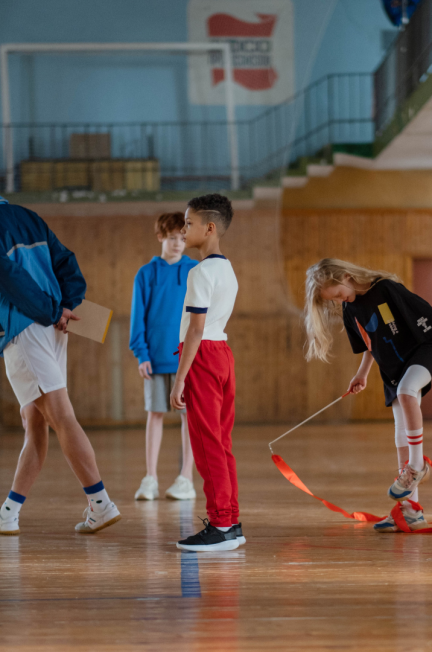Physical education (PE) is a broad term that includes physical activity, sports, games, and recreation activities. Wellness is the state of being physically and mentally well in body, mind, and spirit. The article will explore the relationship between wellness and physical education through three main points:
What is Wellness?
Wellness encompasses a broad range of activities that can improve overall physical health and well-being. Wellness programs may include exercises to promote joint stability, balance, and strength; workouts that emphasize cardiovascular fitness; relaxation techniques to reduce stress; nutritional counselling to optimize diet and supplement intake; and diagnostic testing to identify any underlying health concerns.
Physical education teachers can play an important role in promoting wellness in their students by incorporating wellness activities into the physical education curriculum. In addition, teachers can encourage students to become active participants in their wellness by setting goals and following through with action plans. By working together, educators and students can create a healthy environment for all involved.
The Importance of Wellness in Education
There is no doubt that wellness is important in education. Too often, our school-aged children are taught about discipline and academic success, but not about how to manage stress and stay healthy. This can have serious consequences for their physical and mental health down the road.
Any student who suffers from chronic stress can have a harder time concentrating in class, sleeping well, eating nutritiously, and maintaining good physical health. Poor physical health can lead to conditions such as obesity, heart disease, diabetes, autoimmune disorders, and depression. Chronic stress has been linked with almost every major disease process known to man!
It’s also important to remember that not all students face the same levels of stress. Some students might be more prone to developing chronic stress than others because of their personal experiences or background. For example, students who come from families with high levels of conflict or who are struggling with a difficult transition into adulthood might be more likely to experience chronic stress.
So what can educators do to help their students stay healthy?
Firstly, they should make sure that everyone in the school community knows about the importance of wellness and what steps they can take to improve their health.
Secondly, they should also promote healthy eating habits among students by providing access to fresh food on campus. Firms like Nexdine can play a crucial role in such aspects. These companies can provide top-notch food services to schools and colleges while maintaining the freshness and quality of the food.
Finally, teachers should offer support and guidance when it comes to managing Stressful Life Events (SLEs), such as moving away from home for the first time or starting a new school.
By taking these simple steps, educators can help their students not only stay healthy but also achieve their academic goals.
What is Physical Education?
Physical education is a way to promote health and wellness in students. It helps them learn how to stay active and healthy, and it can help reduce the risk of illnesses such as obesity and heart disease. In addition, physical education can help students learn about teamwork, discipline, and leadership. Physical education also helps students develop their creative skills and feelings of self-confidence.
Why Are Wellness and Physical Education So Important in Education?
Wellness is an important part of physical education for several reasons. First, it can improve overall health and well-being. Second, it can help students learn to manage stress and stay focused in class. Third, it can promote better physical conditioning and performance. Fourth, it can help students develop healthy eating habits. Finally, wellness programs can create a positive environment for sports and physical activity.
How Does Wellness Play a Role in Physical Education?
Physical education is a cornerstone of healthy living. A recent study by the Centers for Disease Control and Prevention (CDC) found that physical activity can prevent chronic diseases such as heart disease, stroke, type 2 diabetes, and some forms of cancer. Wellness also includes mental health and emotional well-being. Mental health issues can lead to physical health problems, so teachers need to promote wellness in their students.
The American Physical Education Association (APEA) recommends that school physical education programs focus on five key areas: cardiovascular fitness, muscle strength and endurance, balance and coordination, flexibility, and nutrition. For each area, students should be taught how to perform basic exercises correctly and how to increase their levels of activity over time. In addition to teaching proper exercise techniques, teachers need to provide a positive environment in which students feel comfortable getting active.
Providing a healthy environment in which students feel comfortable getting active starts with creating an acceptable climate for sport. Teachers should encourage all students to participate in physical activity regardless of their level of ability or age. Students should be taught that they have the power to change their lives by making healthy decisions. By providing positive reinforcement throughout the school year, teachers can create a culture of wellness in their classrooms.
Ways That a Teacher Can Integrate Wellness Into Physical Education
One way that a teacher can integrate wellness into physical education is by having students complete regular health assessments. This will help the teacher to identify any areas of improvement and to develop a plan of action for addressing these issues. Additionally, teachers can provide opportunities for students to engage in physical activity throughout the school day. This can be done by incorporating walking and outdoor play into the classroom environment, as well as providing fitness resources such as exercise equipment and instructional materials. In addition, teachers can encourage students to eat a balanced diet and get enough sleep. By doing this, teachers are helping to promote overall health and well-being, which will have positive effects on student performance in physical education classes.
Physical education classes are one of the most important ways we can teach our students about wellness. Through physical activity, we can help them learn how to manage stress, maintain healthy eating habits, and develop lifelong fitness habits.
Not only do these lessons have a direct impact on student well-being, but they also play an important role in preparing students for future careers that may require good physical health. So next time you’re planning your PE class, make sure to include topics like mindfulness and wound care as part of the curriculum!



